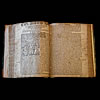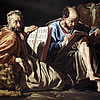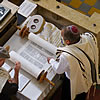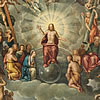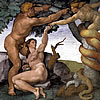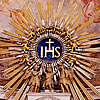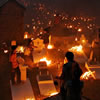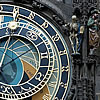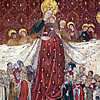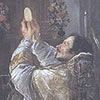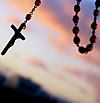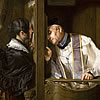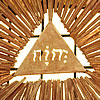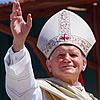Why do Catholics say Mary didn’t have other children aside from Jesus when the bible says he had brothers?
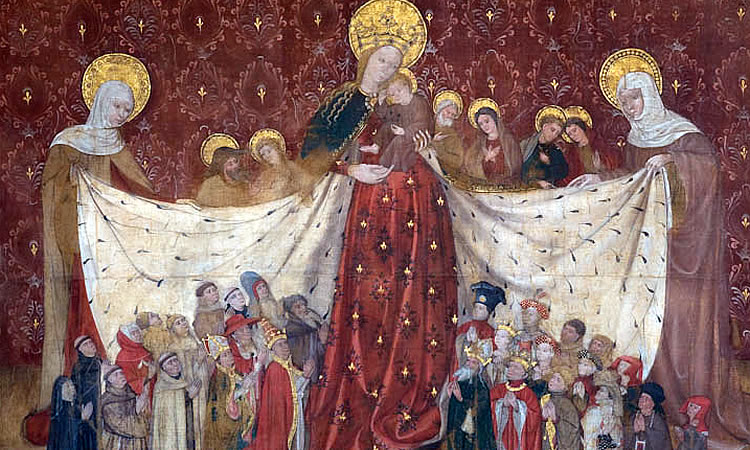
There are three things that are needed to be quickly pointed out without even resorting to doctrine. Firstly the bible was originally written in Greek and the word adelphos or adelphoi was used to denote any close relative(s) and is sometimes rendered “brother” or “brothers” in English. Secondly one can search every square-inch of any bible and one will never find that these “brothers” are Mary’s sons (or daughters); instead they are always expressed as the Lords’ bretheren, and that doesn’t necessarily mean they are Mary’s children. Thirdly, Saint Paul, mentioned James the apostle as a “brother of Christ”, but we know that both apostles named James don’t have St. Joseph as their father.
Let’s expand that.
In its more than 2000 years, The Church has never recognized that Jesus had blood brothers. There is no document in or out of the Church that the Church ever has. It would be absolutely odd that Christians would reverence the apostles and saints but none of Christ’s blood brothers – or even just acknowledge them. One can argue that the Church has embarked in a conspiracy just to forward the claim that Mary remained a virgin, but that is to misunderstand the way the Church works. In the Church truth of what is being taught has always been important. So if any one person or group of people started teaching anything deviant from what was accepted universally by the Church, they would be corrected by the whole. It is one way the Church has preserved oral teaching. The Church is “catholic” in this sense because it comes from the word “kata holos”, which in Greek means, “according to the whole.” So it is impossible to change a teaching without anyone noticing.
So how do we reconcile oral teaching with what the bible says since they are different? Maybe they are not different at all; maybe it is just how it was translated from the original Greek writing.
Let us examine one of the verses that say Jesus had brothers:
Is not this the carpenter’s son? is not his mother called Mary? and his brethren, James, and Joses, and Simon, and Judas?
Matthew 13:55 KJV
In English, the word used is “bretheren” or in more modern linggo, “brothers.” However the original Old and New Testament is written in Greek and the word used is “adelphoi”. In Greek it can mean brothers, yes, but it can also mean close relatives. Whoever translated the word adelphoi in this passage chose to render it as “brothers.” So in effect, the Greek does not unequivocally tell us they are blood brothers. It is the English rendering of “brothers” that causes the confusion.
Let us look at other verses that use adelphos – the singular form of adelphoi:
12 And they took Lot, Abram’s brother’s son, who dwelt in Sodom, and his goods, and departed.
13 And there came one that had escaped, and told Abram the Hebrew; for he dwelt in the plain of Mamre the Amorite, brother of Eshcol, and brother of Aner: and these were confederate with Abram.
14 And when Abram heard that his brother was taken captive, he armed his trained servants, born in his own house, three hundred and eighteen, and pursued them unto Dan.Genesis 14:12-14 KJV
What is interesting about this is that in verse 12 we learn that Lot is the nephew of Abram (the son of Abram’s brother.) Lot was taken captive and it would seem that he was captured with some others because in verse 13 someone escapes and tells Abram about it. Verse 14 talks about Abram knowing that Lot was captured but the words used are, “when Abram heard that his brother was taken captive...” The word “brother” refers to Lot, but Lot is not Abram’s brother; instead he is his nephew. How can the bible make a glaring mistake? We have to go back to the Greek where the word is adelphos. So there is no mistake in Greek because adelphos can mean “uncle” too. The person, however, who translated this verse from Greek to English chose to render “adelphos” as “brother” (in this sense, a euphemism for someone close) instead of “uncle.” So if in these verses “brother” can mean “uncle” is it not at all possible that in Matthew 13:55 the word rendered as “brothers” can mean cousins or uncles or half-brothers?
When we examine more verses rendered in English, we can assume that “brother” can mean more than blood brother. In his letter to the Galatians, St.Paul tells them:
Then after three years I went up to Jerusalem to see Peter, and abode with him fifteen days. But other of the apostles saw I none, save James the Lord’s brother.
Galatians 1:18 KJV
From this verse Paul clearly states that the James he saw in Jerusalem is an apostle and also the Lord’s brother. In fact many scholars say that this is the same James in Matthew 13:55. But when we read more verses from Matthew, it doesn’t seem like James is a blood brother at all:
Now the names of the twelve apostles are these; The first, Simon, who is called Peter, and Andrew his brother; James the son of Zebedee, and John his brother; Philip, and Bartholomew; Thomas, and Matthew the publican; James the son of Alphaeus, and Lebbaeus, whose surname was Thaddaeus; Simon the Canaanite, and Judas Iscariot, who also betrayed him.
Matthew 10:2-4 KJV
From this list of apostles in Matthew’s Gospel, there are only two apostles named James. The first is the brother of John and both are sons of a man named Zebedee. The other James, the Gospel continues to say, is the son of a man named Alphaeus. It is reasonable to conclude that none of these apostles named James are a son of Joseph the husband of Mary. That can only mean the word “brother” used by St. Paul in Galatians 1:18 does not mean blood brother but some close relative. (Of course one can say that this James is the son of Mary with a husband she married after St. Joseph – but that is stretching it too much because there is no biblical reference of Mary ever marrying again.)
But we have a clue who this James is from the crucifixion scene when three Gospels describe who were present:
There were also women looking on afar off: among whom was Mary Magdalene, and Mary the mother of James the less and of Joses, and Salome;
Mark 15:40 KJV
Among which was Mary Magdalene, and Mary the mother of James and Joses, and the mother of Zebedees children.
Matthew 27:56 KJV
Now there stood by the cross of Jesus his mother, and his mother’s sister, Mary the wife of Cleophas, and Mary Magdalene.
John 19:25 KJV
The three accounts tell us that there were four women in the scene. The first is Mary, the mother of Jesus. The second is Mary Magdalene. The third is Salome the mother of the apostles James and John. The fourth is another Mary who is most important in our discussion. This Mary according to Mark is the mother of James the Less – the apostle! “James the Less” is the title given to the apostle James to different St. James the brother of St. John. Mark also says this Mary is the mother of Joses. (These two names “James” and “Joses” appear in Matthew 13:55 and scholars say are likely the same ones). John’s Gospel says this third Mary is the sister of Jesus’ mother!1 That would make this James not a blood brother of Jesus, but some sort of cousin.2 This should put to rest that the use of “brother” in Matthew 13:55, and Galatians 1:18 for this particular James does not mean blood brother. And once we have shown that, one cannot claim with certainty that the other “bretheren” are blood brothers.The Church explains these “brothers and sisters” of Jesus are his close relatives – never as children of Mary. The Church has expressed that St. Joseph would have known Mary’s womb was sacred for it was a vessel for God and he wouldn’t use it for bearing his own children.3
It is not exactly clear what relationships these bretheren are to Jesus, but the Church has always maintained that they are not Mary’s children. If Mary has any children it is us who form the Church, for when Christ hung on the cross he gave Mary to John: “Woman, behold your son.” (John 19:26), and John to Mary: “Behold your mother.” (John 19:27) – with John as a representative of the Church. (Isn’t it odd that Christ would give Mary to John, the son of Zebedee and Salome, to care for Mary if she had other children of her own to take care of her? ) Thus Mary is the mother of the Church, and we are all her children, which is why we call her, Mother Mary.
1We are also not sure of the relationship of Mary the mother of Jesus and Mary the mother of James is because we also don’t know exactly what “sister” connotes. It could be they are blood sisters or not. Thus we cannot exactly say what James is to Jesus except that he was a blood relation; but definitely not a blood brother.
2She is referred to as the “wife of Cleophas”, but we know James the Less is the son of Alphaeus from Matthew 10:2-4. So it can mean Cleophas was also known by the name “Alphaeus” (the same way Saint Paul was known by his Greek name “Paul” as well as his Hebrew name “Saul”) , or Cleophas is the current wife of Mary and James was her son from a previous marriage to a man named Alpaheus.
3One can also investigate a document called the Protoevangelium of James, which describes the early life of Mary. It tells of how St. Joachim and St. Anne, Mary’s parents, met in the Golden Gate (where the name of the bridge in San Francisco gets its name). It also describes how Joseph was chosen to be Mary’s husband. In this account, Joseph was a widower who had children from a previous marriage! Couldn’t it be possible that the “brothers” of Jesus are his half-brothers – the sons of St. Joseph before he married Mary? What is even more interesting is that the writer of this apocryphal Gospel allegedly claims to be James, “the brother of Jesus”. The authorship is not clear but wouldn’t that make sense if he was the son of Joseph from a previous marriage; and thus witness to the events he is writing about?



